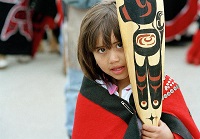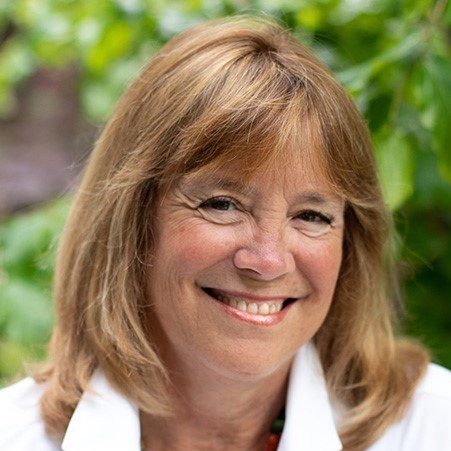Algonguin Elder William Commanda, from Mamiwinini, Canada stated in 1991…
 Traditional people of Indian nations have interpreted the two roads that face the light-skinned race as the road to technology and the road to spirituality. We feel that the road to technology…. has led modern society to a damaged and seared earth. Could it be that the road to technology represents a rush to destruction, and that the road to spirituality represents the slower path that the traditional native people have traveled and are now seeking again? The earth is not scorched on this trail. The grass is still growing there.
Traditional people of Indian nations have interpreted the two roads that face the light-skinned race as the road to technology and the road to spirituality. We feel that the road to technology…. has led modern society to a damaged and seared earth. Could it be that the road to technology represents a rush to destruction, and that the road to spirituality represents the slower path that the traditional native people have traveled and are now seeking again? The earth is not scorched on this trail. The grass is still growing there.
I have had the opportunity to spend the past year offering Foundation Series Workshops in four First Nations communities, funded by a grant from Vancouver Coast Health. I would like to take this opportunity to reflect on this process of “education”, and share with you the knowledge and gifts bestowed upon me by First Nations peoples, who touched and moved me in ways that were often far beyond my comprehension. Enjoy, and take joy in what was my experience of a lifetime.
While I’ve worked in many First Nations communities previously, this past year I was allowed the opportunity to gather together and have many conversations with literally hundreds of First Nations children, youth, parents, elders, caregivers, and workers from health, education, and social sectors. While there to offer foundational information about ways to enhance child development and learning, my workshops transformed into a process of information exchange, morphing into rich dialogue containing dreams, hopes, and visions for future First Nations children and youth. What started as educational workshops, turned into a forum where all participants were invited to share not only their immediate concerns for their children, but also share their ideas and visions for creating a better and more sustainable future for First Nations children and their families. What follows is excerpted information from participant information offered during education workshops, collated workshop evaluations, and from comments during meetings with First Nations peoples from four First Nations communities in British Columbia.
Children and Youth
I had the opportunity to meet with numerous children in daycare/preschool, school, home, community, and clinic settings, as well as spoke with many children and youth in large gatherings in gyms, classrooms, and libraries. The general format of my presentation termed “Tech Talk” was to offer information about what type of activities children and youth need to grow optimally and succeed in school, with focus on activities that include movement, touch, human connection, and nature. I then talked about the negative impact of technology (TV, internet, cell phones) on achieving this optimal growth and academic success. I talked about the impact of tech on four human domains: physical, mental, social, and spiritual, and ended the presentation with the question “What could there be in your community that would make you put down the tech, and go outside and play”? All ages of children and youth resoundingly said “swings” in answer to my question, and went on to talk about how there is nothing for them to do outside, and how the play and gathering spaces are either non-existent, dilapidated, or did not contain engaging or “fun” equipment. Children wanted higher, faster, and more physically challenging equipment, and suggested a variety of swings and slides, spider net climbing frames, parallel and ladder poles, merry-go-rounds, spring devices, platform float with slide for swimming in summer, and cement course to accommodate bikes, skateboards, and a water park. Youth requested forest bike trails to destination places such as covered fire pit or picnic areas, basketball nets, volleyball court, street hockey court, skateboard park, outdoor gym equipment including stair climber, elliptical, treadmill, bike, and a variety of pipe/bar formations e.g. parallel, ladder, different heights for doing isometric exercises (google Barstarzz).
Parents
Education sessions for parents were similar in format to the presentations for children and youth, and followed the format of providing information regarding critical factors for child development and learning, and resulting impact of technology on those factors. Many parents reported they had no idea of the perils associated with technology overuse by children, especially in the area of the impact of video gaming on child aggression. Sessions for parents ended with the question “What could there be in your community that would encourage you to let your children go outside and play”? Parents responded with concerns regarding prevalence of bears, wolves, and cougar, posing obvious safety risks for their children if unattended. When asked “What could there be in your community that would make you put down the tech and go outside WITH your children”? parents responded that there is nothing for them to do outside, there is nowhere to sit, it’s raining all the time and they get wet, and there is no one to talk to. When asked if there were covered areas containing benches, picnic tables, and outdoor exercise equipment located at parks, beaches and playgrounds, would they go outside and play with their children, and there was a resounding “Yes”! When asked if there was fencing and lighting for playgrounds, increasing safety from wildlife, would they allow their children to go outside and play unattended, some parents agreed that this would relieve their fears.
Elders
The elders who attended the workshops spoke of their concerns regarding technology overuse by both their children who are now adults, and their grandchildren, and reported that they are especially worried about extensive and prolonged use of video games and texting by both the parents and children. The elders in one community talked about how when they were children there used to be organized activities at night, held in the local hall or church, attended by all the families in the village where families would come together to do crafts, eat, dance, and do sport-type activities. The elders spoke about how their time in the residential schools deprived them of any type of play activities, and that they as a result didn’t know how to play with their children, nor their grandchildren. Two elders told me that they also didn’t touch or hug their children, due to the touch they received as children in the residential schools was harmful, but now see how important it is to use safe touch and hug their children and grandchildren.
Educators
Daycare, pre-school and school staff reported they had not understood the importance of movement and nature on enhancing development, literacy, and learning, and immediately started to take their children outside to play on a more regular basis. Staff appeared especially interested in the use of proprioceptive (muscle contraction), vestibular (movement off centre), and tactile (deep pressure) stimulation to improve core stability and motor coordination for eventual printing and reading, to calm anxiety and optimize attention and learning ability, as well as to act as an “energy dump” for pent up energy that often results in problematic behaviour. Teachers also stated they did not know how and why primary children need to learn to print, and that instruction should be at least 45 minutes per day for grades K-3. My consultation service regarding improved playground spaces and funding for such, as well as increase printing instruction, is still ongoing in two of the four First Nations communities.
Health Providers
Information provided in the area of managing balance between critical factors for child development and learning, with technology use, was new information for the majority of health providers. In three of the four communities, decisions were made by health providers to enact an initiative called Crash-N-Bump, which is a program designed to enhance sensory, motor and attachment development for children ages 0-10 years designed by myself and pediatric registered nurse Susan Lansdowne. Crash-N-Bump is already operational one day per week in one First Nation community hall, and consists of 8 stations children rotate through, challenging their sensory and motor systems, and building attachment with their parents and caregivers. Crash-N-Bump consists of two bouncy castles and a variety of suspended equipment, and is attended by the majority of this First Nation’s children, as well as draws in approximately 10% of the existing parent population. Crash-N-Bump is currently being expanded to the 10-18 year youth population due to demand from youth for this type of activity. Information is still being developed in the area of parent technology screening and information tools, including brochures, posters, and workshop materials. Health professionals have requested provision of one hour Foundation Series Workshops for continued provision of this information to parents.
Future Endeavors
In order to carry on with planning initiatives to enhance child development and learning, focus groups were formed in each First Nations community. Focus groups were provided with a template funding proposal to use to gain support for identified initiatives to enhance child development and learning in three areas: early intervention (0-6 years), school age (6-18 years) and community (0-elder age). I intend to continue to work with First Nations focus groups to continue to identify child enhancement initiatives for these three target sectors, and work toward gaining necessary funding to implement community identified initiatives.
Biography of William Commanda excerpted from Reflections Outdoors
William Commanda, OC (Anishnabe name: Ojigkwanong) is an Algonquin elder, born November 11, 1913 in Kitigan-zibi, Quebec (Garden River/Riviere Desert), near Maniwaki, Quebec, 130 kilometres (81 miles) north of Ottawa in the Gatineau River valley. Commanda is the great-grandson of Chief Pakinawatik who led his people in 1854 from the Lake of theTwoMountainsto Réserve de la Rivière Désert, also known as the Kitigan-zibi Reserve, along the Gatineau River. Commanda worked as a guide, trapper and woodsman, a birch bark canoe maker and craftsman. Commanda was Keeper of several Algonquin Wampum Shell Belts which held records of prophecies, history, treaties and agreements. The three Wampum Belts under his care are:
- the Seven Fires Prophecy Belt;
- the Jay Treaty Border Crossing Belt; and
- the Three Figure Welcoming/Agreement Wampum Belt.
Commanda served as Band Chief of the Kitigan-zibi Anishinabeg First Nation from 1951 to 1970. In 1987 at the fourth First Ministers Conference on inherent rights and self-government for Aboriginal people, Commanda began teaching about the messages of the wampum belts. He was invited in 1990 to provide a traditional blessing of the Canadian Human Rights Monument in Ottawa with the Dalai Lama. In 1998, Commanda participated in a ceremony at which he presented Nelson Mandela with an eagle feather on behalf of the First Nations of Canada. That same year, Commanda organized Elders Without Borders, a gathering of Aboriginal Elders and spiritual leaders from both North and South America.
In 2008, he was made an Officer of the Order of Canada.




